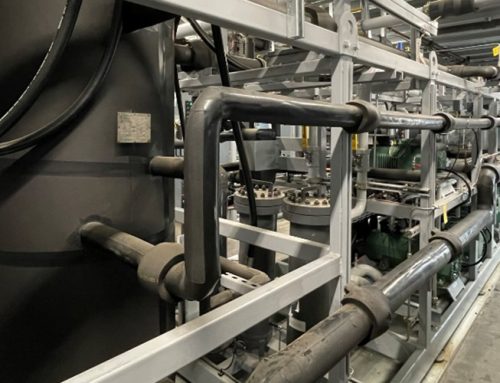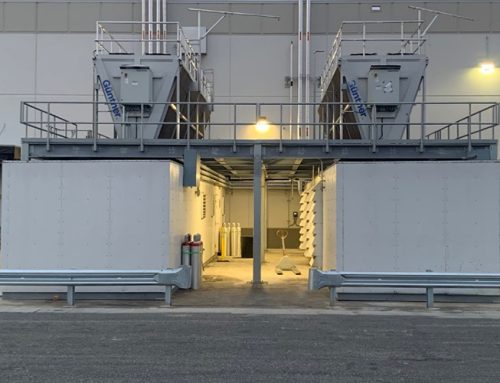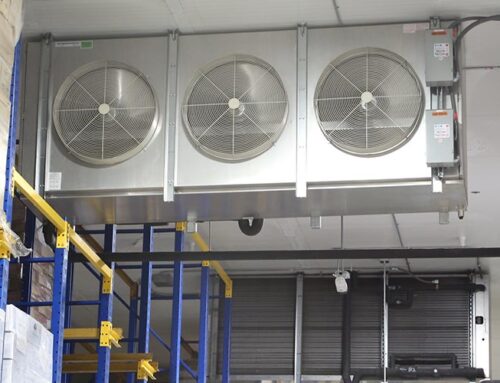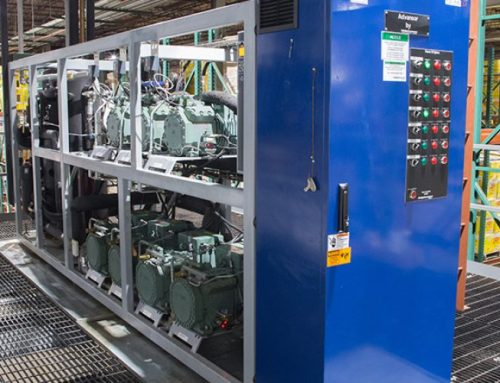What Makes Up a Typical Industrial Refrigeration System in Food and Beverage Production and Processing?
Small Facilities
Refrigeration is generally provided by traditional, single-stage, direct expansion systems. Piston/reciprocating compressors are commonly used in these, and the refrigeration is produced by the refrigerant itself. These systems offer advantages since they are simple, reliable, the least expensive, and easy to implement and maintain.
Larger Facilities
- Chilling … Single-stage systems with flooded evaporators are recommended. The use of a secondary refrigerant (such as propylene glycol) for cooling distribution dramatically reduces the use of the primary refrigerant. This can be of significant benefit when the primary refrigerant is ammonia where toxicity or flammability is a concern.
- Freezing … Two-stage refrigeration systems (often with a screw and/or piston compressor in series) with flooded evaporators are typically used and recommended.
- Chilling and Freezing … Screw compressors are often used because of their high ratio of refrigeration capacity to overall dimension, even if large piston compressors can easily do the job. Two-stage refrigeration systems are typically employed because of their efficiency in the freezing process.
Advances in technology have made the use of environmentally friendly CO2 booster systems practical across a wide range of applications. A booster system uses only CO2. It does not have to rely on any HFC or ammonia refrigerants, as other parallel rack systems do. In large part, this is made possible by the function of two main components that are not found on traditional types of systems — a high-pressure control valve and a flash-gas bypass valve. In tandem with a third component, the condenser/gas cooler, which works as a condenser like the ones on most other types of systems, CO2 booster systems have become a practical alternative to traditional systems for almost any type of application.




